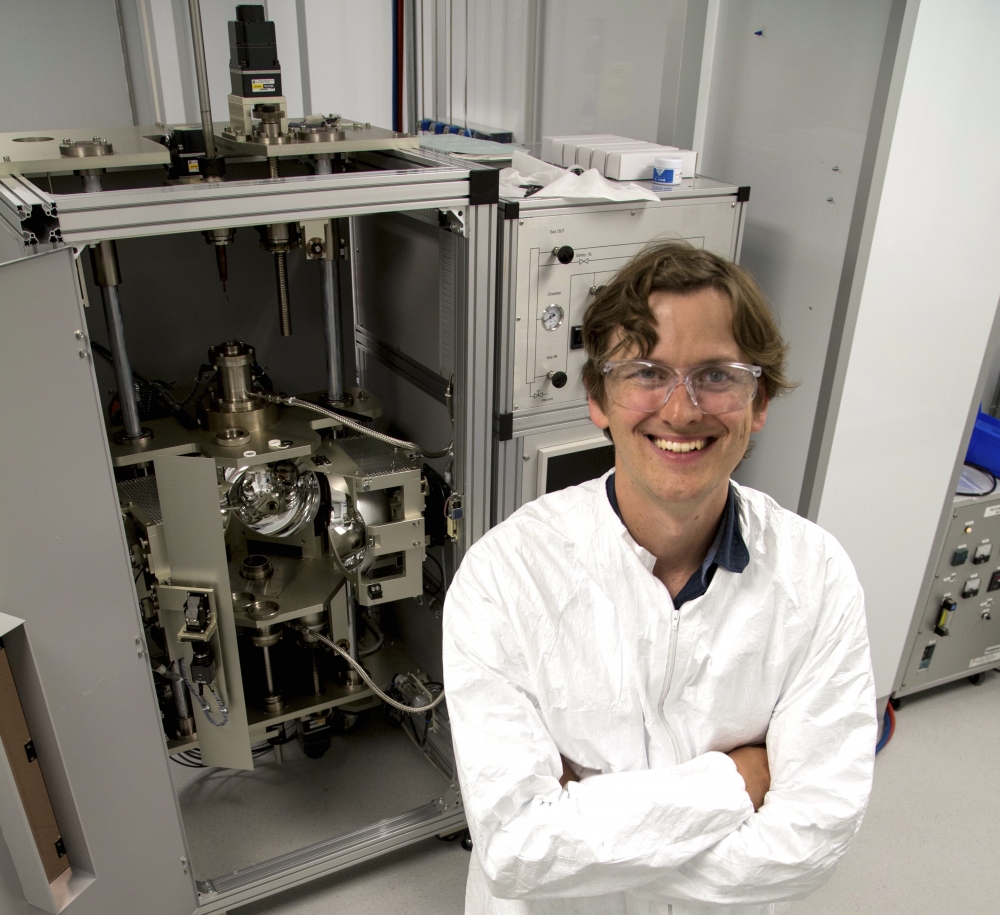
Crystal Clear
With a $1 million grant from the W.M. Keck Foundation, UC Santa Barbara materials scientist Stephen D. Wilson is on his way to finding the 21st century’s silicon, a key element used in the semiconductors of today’s electronics. His latest project aims to grow new exotic materials capable of driving technological and scientific advances to new levels.
“I was absolutely thrilled when I found out about the award,” said Wilson, an assistant professor in the materials department who joined the faculty last fall. “This project is built around ideas that have kept me up at night thinking for a very long time. So, personally, it’s an opportunity to realize an obsession, and it’s something that will influence my research far into the future. I’m honored to have the Keck Foundation’s support, and I’m excited about getting started.”
With the goal of designing a refined ultrahigh-purity crystal growth process once used for making silicon, Wilson and his team are building new hardware capable of using the same process to produce crystals of volatile and high-pressure stabilized oxides. These targeted compounds represent a new frontier of materials that theoretical research predicts will lead to a multitude of new quantum states. At the same time, however, scientific progress is limited by lack of access to new high-purity crystals.
According to Wilson, the ability to grow new high-purity crystals of inorganic materials has historically not only driven the development of materials underlying many current technologies but also fueled the engine of discovery at the frontiers of electronic/quantum phase behavior.
“What we propose to do is reimagine the concept of the floating zone furnace developed for the semiconductor industry more than 50 years ago,” Wilson said. “These furnaces were built for industrial applications and scientists have merely adapted them.”
Conventional floating zone furnaces use ellipsoidal mirrors to focus light from halogen bulbs to a point inside a transparent growth chamber, typically comprised of a quartz cylinder. Heat causes a target material to melt, which when cooled in a controlled manner can create crystals. During the growth process the molten material does not touch the container walls and is held in place only by surface tension — forming what is called a floating zone.
Wilson’s new design uses a laser as the heat source, allowing the growth chamber to be made of metal with strategically placed sapphire windows. This change will in turn enable higher pressures. Wilson likened the reimagined optical furnace to a miniature submarine, which is able to operate deep in the ocean under great pressure.
“This furnace is going to be capable of floating zone growth of volatile oxides at pressures that are at least 10 times higher than the current state of the art,” Wilson explained. “Then we’re going to use this furnace to grow and explore materials in this new regime where new quantum states are being predicted.”
Based in Los Angeles, the W.M. Keck Foundation was established in 1954 by the late W. M. Keck, founder of The Superior Oil Co. The foundation’s grant-making is focused primarily on pioneering efforts in the areas of medical, science and engineering research. The foundation also maintains an undergraduate education program that promotes distinctive learning and research experiences for students in the sciences and in the liberal arts, and a Southern California Grant Program that provides support for the Los Angeles community, with a special emphasis on children and youth from low-income families, special-needs populations and safety-net services.



